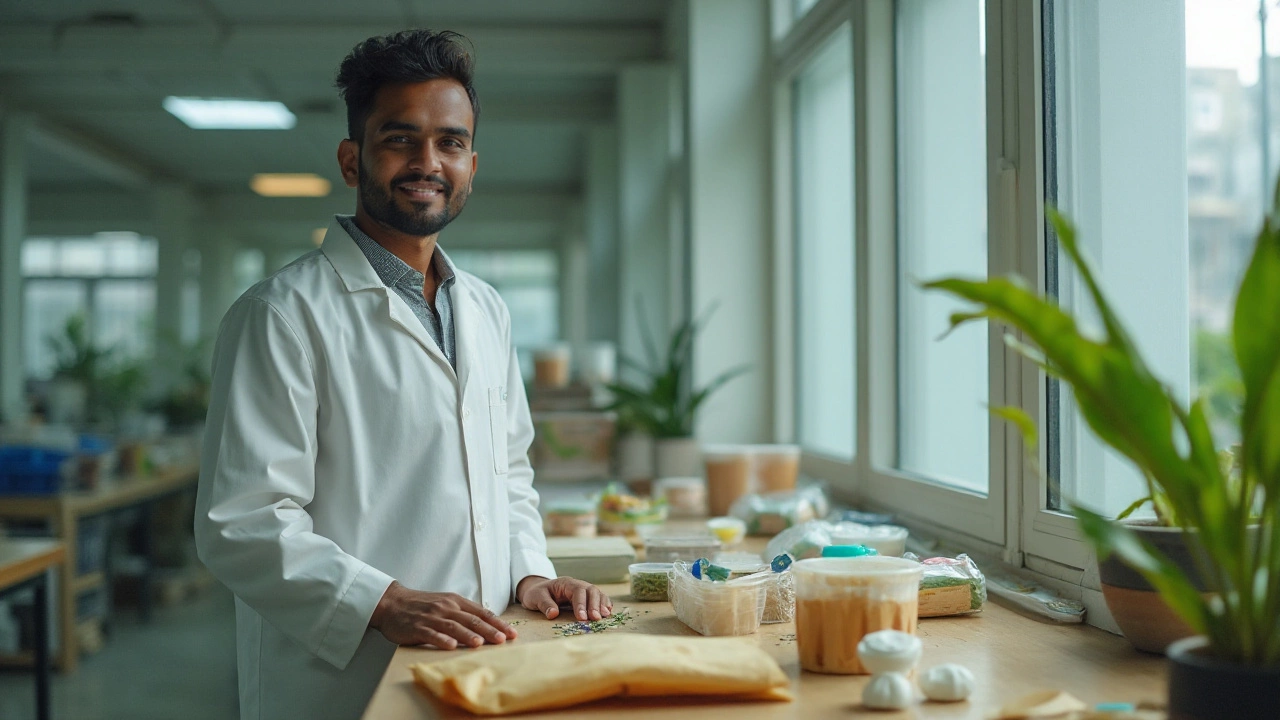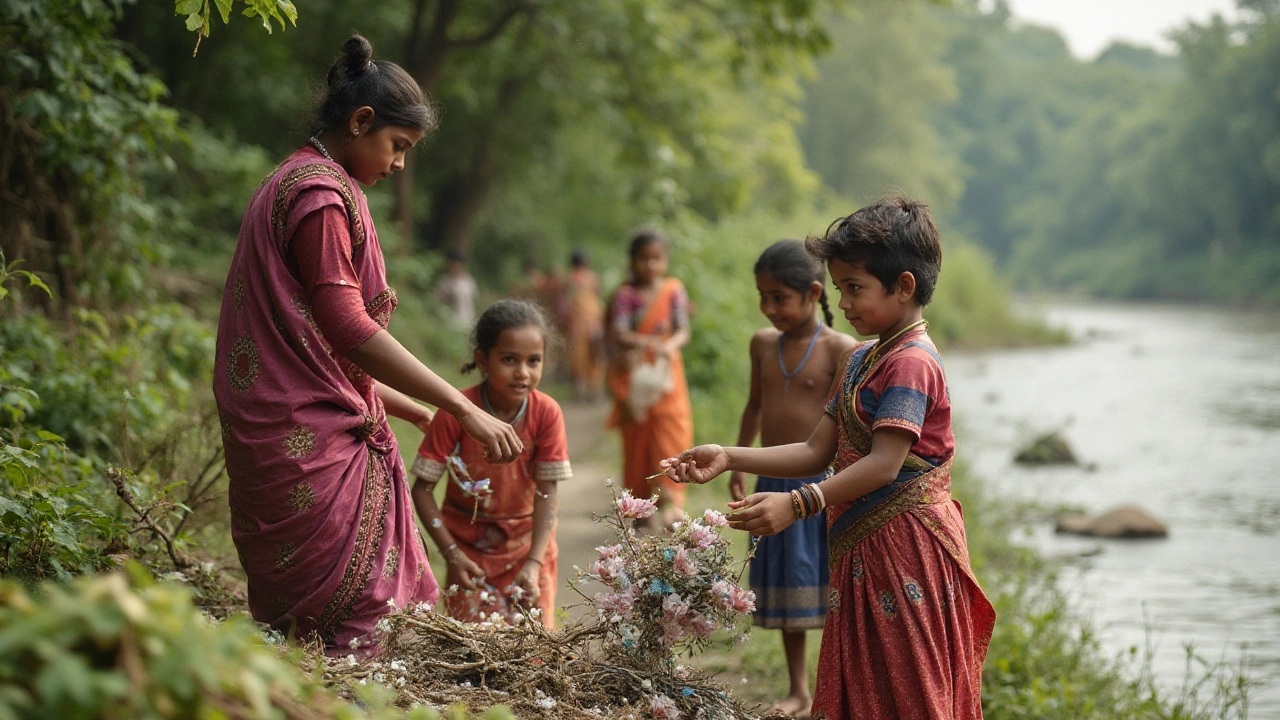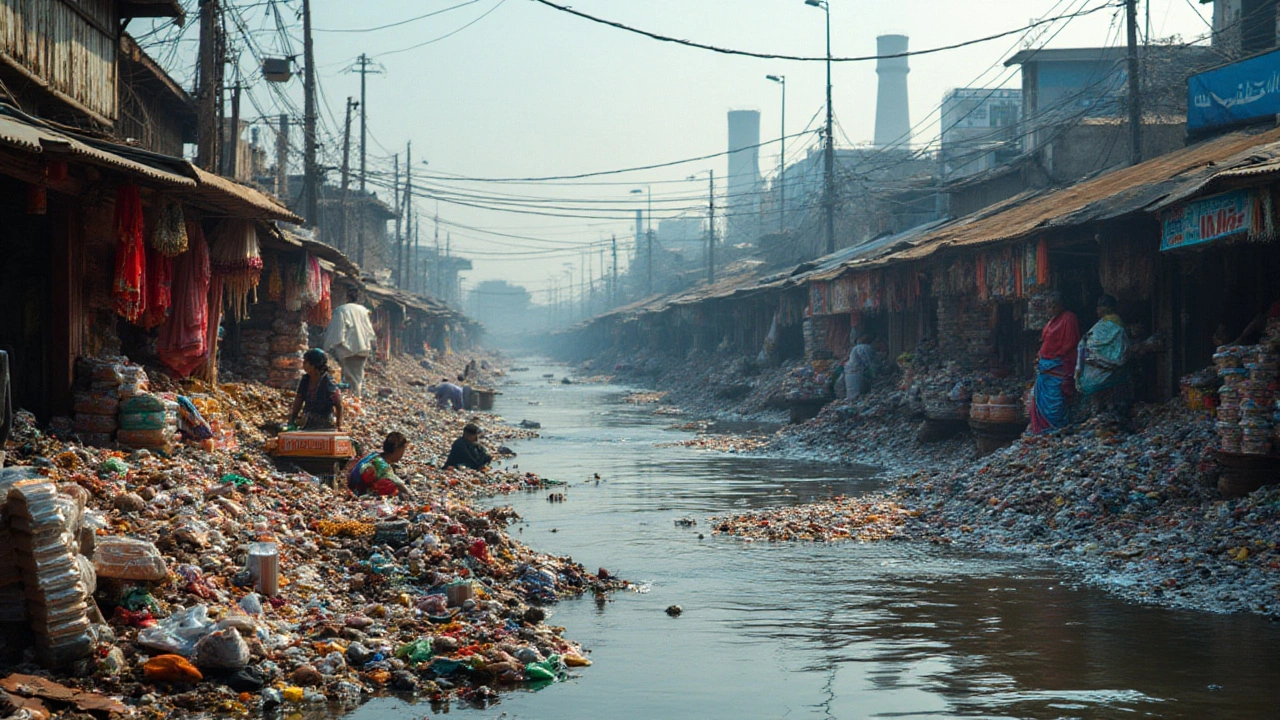The rising tide of plastic pollution impacts our environment daily, strangling our oceans and littering landscapes. This isn't just about single-use plastics; it's about mammoth industries producing them in staggering amounts. Many of us unknowingly support this through our choices in products from companies contributing the most to this pollution.
We'll dive deep into those companies whose plastic footprints are toughest to wash away and explore efforts they are taking (or not) to address the damage. Understanding these factors can empower decisions that drive demands for more eco-friendly approaches and alternatives.
- The Plastic Pollution Crisis
- Companies Leading in Plastic Waste
- Impact on the Environment
- Response from the Companies
- Sustainable Alternatives
- What Can Consumers Do?
The Plastic Pollution Crisis
The plastic pollution crisis stands as one of the most pressing environmental challenges of our times. Mountains of discarded plastic, much of it produced by a few prominent companies, now pollute our planet’s land and seas. This crisis is not a distant threat but an immediate one affecting wildlife, ecosystems, and human health across the globe. An astounding 8 million metric tons of plastic pollution finds its way into the oceans each year, according to a report by National Geographic. That's roughly equivalent to dumping a garbage truck full of plastic into the ocean every minute. This means vast ocean gyres become swirling islands of trash, and if current trends continue, plastics are expected to outweigh all the fish in the sea by the year 2050.
The consumption of plastic products has been skyrocketing since their inception. What's alarming is the disposability that accompanies these items. The convenience of single-use plastics has woven deeply into our daily life, but this convenience comes at a grave cost. Many companies manufacture items designed to be used for a moment but linger in our environment for centuries. Products like plastic bottles, bags, and wrappers are convenient yet insidiously detrimental as they persist in ecosystems, leaching toxins and harming life. Although there are recycling initiatives, less than 10% of all plastic ever produced has been recycled, as detailed by a study in Science Advances.
Plastic pollution is not just an ecological issue but a significant health concern as well. As these plastics break into microplastics, they invade our water sources, food chain, and even the air we breathe. Studies have found microplastics in marine organisms, tap water, and even table salt. Recent shocking discoveries even uncovered microplastics in human bloodstreams, raising alarm over their potential health impacts. Given this, addressing environmental impact from plastics isn’t merely a matter of conservation but a crucial step for public health and sustainability.
"Plastic pollution is primarily a waste management problem, but it's turning into a planetary boundary issue," says Dr. Tony Walker, environmental scientist. "We need drastic changes in policies, production, and consumer behavior to address this catastrophe."
The onus is not only on individuals but also businesses that produce and promote plastic use. Many of the largest contributors to plastic waste are some of the world's most recognizable brands. These companies have a responsibility to invest in sustainable practices, innovative product designs, and closed-loop systems to manage waste. There's a growing consumer demand for accountability and transparency in how companies approach their environmental stewardship.
The sheer scale of plastic pollution demands a multi-faceted response from all sectors of society. Only with a coordinated effort involving governments, businesses, and individuals can we hope to curb the tide of plastic waste. Transitioning to alternative materials and reducing dependence on plastics is essential. Engaging with this issue is no longer optional but imperative to ensure a livable planet for future generations.
Companies Leading in Plastic Waste
When we look at which companies contribute the most to plastic pollution, global giants often top the list. Year after year, brands like Coca-Cola, PepsiCo, and Nestlé have been identified as leading contributors to plastic waste. These corporations produce vast amounts of single-use plastics in the form of bottles, packaging, and various containers. Despite numerous pledges to improve sustainability, their plastic outputs remain staggering. With the global demand for convenience and packaged goods, these companies find themselves at the heart of the plastic problem.
A study conducted by Break Free From Plastic identified Coca-Cola as the top plastic polluter for several consecutive years. Their report found Coca-Cola-branded plastic in the waste streams of over 51 countries. This is a testament to the brand's global reach and the immense challenge of managing its waste. Although the company has announced goals like using 50% recyclable materials by 2030, critics argue that these steps are not nearly enough given the scale of their production.
"The global plastic crisis is fuelled by corporations like Coca-Cola that continue to rely on single-use plastic packaging for profits," said Von Hernandez, Global Coordinator of Break Free From Plastic.
Another major player is PepsiCo, known for its vast portfolio of snacks and beverages. Like its rival, PepsiCo generates tons of plastic waste, largely due to its packaging. Although the company has partnered with Loop Industries for sustainable packaging solutions, the transition away from plastic is slow. Critics emphasize the need for faster action, especially in developing markets where waste infrastructure is still evolving. In response, PepsiCo has committed to reducing virgin plastic content and increasing the recyclability of its products.
Nestlé, renowned for products spanning from chocolates to health supplements, also ranks high in plastic waste production. With a goal of making all its packaging recyclable or reusable by 2025, Nestlé has taken some initiative. However, environmentalists urge them to go beyond recycling. Switching to entirely new packaging solutions could lead to a significant reduction in their plastic footprint. Initiatives like these are important, but without global policy changes or technological advancements, progress can be stifled by economic constraints and consumer habits.
A recent audit highlights the prevalence of single-use plastics, common in everyday items produced by these brands. Here’s a breakdown of contributions by material type:
| Company | Plastic Type | Percentage of Waste |
|---|---|---|
| Coca-Cola | PET Bottles | 58% |
| PepsiCo | Snack Wrappers | 63% |
| Nestlé | Pouches and Wrappers | 49% |
With such statistics at hand, it’s clear these companies play a significant role in global plastic pollution. While some progress is being made with alternative materials and recycling efforts, the pace needs to be accelerated. The role of the consumer cannot be understated. Public demand for sustainable solutions is vital in pushing corporations to innovate and reduce their environmental impact.

Impact on the Environment
Plastic pollution has woven itself into the very fabric of our planet's ecosystems, leaving a trail of devastation that is hard to ignore. When you stroll along a beach or wander through a forest, plastic is always present. The impact isn't limited to unsightly litter; it's an intricate problem affecting every level of the food chain. From the largest whales ingesting debris to the smallest plankton coated in microplastics, the reach is ubiquitous. One might think, "What does a plastic water bottle floating in the ocean have to do with me?" Quite a lot, actually. These plastics break down into tiny pieces, getting consumed by marine life, which eventually makes its way onto our plates, linking us directly to the pollution cycle.
The permanence of plastics is what makes them particularly troublesome. Unlike organic materials, plastics do not decompose. Instead, they photodegrade, breaking up into smaller and smaller pieces without truly disappearing. This is where the term 'microplastics' becomes vital. They invade the soil, compromising its quality, and find their way into water sources, affecting not only wildlife but humans as well. Research indicates that an average person might be consuming thousands of microplastic particles each week through food and water. Plankton, a crucial part of the marine food web, inadvertently consume these particles, affecting their survival, which could have dire effects on ocean health.
Environmental impact doesn't end with marine life. Birds, for instance, often mistake plastic pieces for food, leading to starvation and death as their stomachs fill with indigestible debris. The statistics are harrowing; a study published in 2015 estimated that by 2050, 99% of all bird species will have ingested plastic. Forest ecosystems are not exempt either, as plastic bags and other items impede the growth of flora by blocking sunlight and restricting nutrient absorption. The ramifications extend to economic fronts, with tourism and fishing industries suffering due to declining beauty and functionality of the natural world.
"In every nine tons of plastic produced, about one ton ends up in the ocean," said Dr. Jenna Jambeck, a prominent environmental engineer, highlighting the alarming scale of this issue.
When we talk about companies that pollute the most plastic, their impact on the environment cannot be overstated. By focusing on these businesses, we reveal a larger, systematic problem requiring collective responsibility to mitigate. Some of the most significant contributions to rubble in our ecosystems come from everyday consumer goods, as they prioritize short-term convenience over long-term sustainability. This calls for stringent waste management policies and technological advancements aiming at reducing the dependency on plastic.
Repercussions are not confined to ecological aspects alone; tangible effects on human health and livelihood loom large as communities face polluted environments and depleted resources. As awareness grows, the pressure mounts on notorious polluters to implement changes swiftly. Transforming this dire situation requires a collaborative effort spanning regulatory bodies, consumers, and corporations to engage in sustainable practices that prioritize the environment over profit.
Response from the Companies
In recent years, pressure has intensified on the corporate giants at the helm of extensive plastic pollution. Many of these companies are household names, their logos and products a constant presence in our daily lives. The world is watching, demanding accountability, and companies are beginning to respond to this scrutiny with strategies aimed at addressing their environmental impact. The responses vary widely; some are taking bold steps, while others appear to be caught in the quagmire of corporate inertia.
Several companies have taken significant initiatives, setting ambitious targets for reducing their plastic footprints. Unilever, for instance, pledged to reduce its use of non-recyclable plastics by 2025 and increase the use of recycled plastic content in its packaging to 25%. This commitment marks a notable stride toward mitigating its environmental impact but implementing this promise across its vast network of products globally remains a huge challenge. Coca-Cola, another major contributor to plastic waste, has launched its 'World Without Waste' initiative, aiming to collect and recycle every bottle or can it sells by 2030. However, critics have voiced concerns about the feasibility of these targets.
Not all feedback is positive, with some environmental organizations arguing that the pace of change is insufficient. Greenpeace has highlighted the need for these companies to invest more in developing sustainable packaging alternatives, rather than relying solely on recycling. A recent report stated, "
Simply put, recycling alone cannot fix our plastic problem. Companies need to focus on reducing the production and consumption of single-use plastics."It emphasizes the necessity for more transformative action beyond current pledges.
The commitment to tackling the environmental impact is often entwined with the company's brand reputation strategy. As consumers become increasingly conscious of their environmental impact, many companies are aligning their interests to resonate with these concerns. Nestlé, for example, has incorporated its sustainability goals into its broader corporate strategy. While these plans are publicized as groundbreaking, there is typically some level of skepticism regarding the genuineness and the tangible outcomes of these corporate promises. Many consumers advocate for third-party audits to ensure that these companies adhere to their goals and not just exploit social trends for brand benefit.
Some companies are exploring collaborations to tackle the plastic waste issue collectively. For example, the Alliance to End Plastic Waste, a coalition including major producers and users of plastics like BASF, Procter & Gamble, and Shell, seeks to offer solutions for waste management and develop new recycling technologies. An interesting note is that such alliances might bridge the technological and operational gaps that individual companies face. However, as promising as these alliances may sound, they also draw skepticism over their actual impact versus public perception benefits.
Despite mixed reviews, these responses illustrate a shift within the industry. Acknowledging the role they play in exacerbating the plastic crisis, companies are now required—not only by consumer pressure but also regulatory pressures—to change their operations. Governments worldwide are progressively imposing regulations on plastic manufacturers to curb pollution, driving companies to pivot toward more sustainable practices. This response from the companies signifies an evolving acknowledgment that while profitability is crucial, there’s also a responsibility to protect the planet; the challenge lies in balancing both ends without compromising efficacy in either.

Sustainable Alternatives
The world is waking up to the pressing challenge of finding sustainable alternatives to plastic. It's not just about recycling better, it's about entirely rethinking materials we have come to rely on. Companies and innovators are exploring bioplastics, often made from renewable plant sources like cornstarch, making them compostable. Such materials can break down more naturally compared to conventional plastics, though it requires industrial composting conditions in many cases.
You might hear about the growing interest in algae-based plastics. Algae is a renewable resource that grows quickly with little input, offering a greener footprint and a promising future. It's about balancing durability with environmentally friendly degradation. Companies like Evoware are leading the way, using seaweed to create biodegradable packaging, demonstrating that nature often provides a fruitful source for innovation.
"Our choices at the grocery store are votes for environmental change. Supporting sustainable packaging makes a real difference." - Jane GoodallAddressing the environmental impact of plastics also means leveraging technology. Advances in enzyme research have shown that certain enzymes can break down plastic in record time, which is promising for addressing existing waste. Such technologies could drastically reduce landfill burdens and encourage cleaner oceans. While it’s encouraging, the road to large-scale implementation requires investment and global commitment.
On a lighter note, creative upcycling and reuse initiatives provide ways to empower consumers directly. Brands like Patagonia are leading by example, recycling plastic bottles into fibers used to make sustainable clothing. It's not just about reducing harm, but also igniting care and responsibility among consumers, fostering an understanding that each step counts.
Producers are also looking into reducing plastic use altogether. The zero-waste movement, gaining in popularity, emphasizes reusing containers and minimizing single-use products. Popular grocery chains are starting to offer bulk product sections, allowing customers to fill their own containers, cutting waste right at the source. Change happens slowly, but these shifts reflect broader societal trends towards eco-conscious living.
Small steps, from carrying reusable bags to opting for products with minimal packaging, contribute to a significant transformation. As industry leaders pivot towards these alternatives, the collective momentum builds a future where plastic pollution can be markedly reduced, if not eradicated. In this transition, consumer knowledge and involvement hold considerable power. By embracing sustainable alternatives, both individuals and corporations play pivotal roles in crafting a healthier planet.
What Can Consumers Do?
As the shadow of plastic pollution looms large, consumers possess the power to tip the scales towards a greener future. The choices we make every day contribute directly to the demand more sustainable practices. A significant step involves looking more closely at the products we buy, ensuring they align with eco-friendly values. Many plastic manufacturers have taken steps to lessen their environmental impact. However, it's essential to support businesses truly committed to reducing waste, rather than those offering only lip-service.
Consumers can harness the power of advocacy by staying informed about company practices regarding waste management and plastic waste production. It's about saying 'no' to brands that continuously contribute to the problem and 'yes' to those rallying for change. The lure of convenience often eclipses this mission. It's natural to feel reluctant about the effort it takes to research and shift preferences. Still, these decisions matter and echo through market systems.
"Never doubt that a small group of thoughtful, committed citizens can change the world; indeed, it's the only thing that ever has." - Margaret Mead
Education plays a pivotal role. Awareness of how plastics affect ecosystems and what alternatives exist can drastically change consumption habits. Participating in local cleanup initiatives also brings the reality of waste management home, grounding societal issues in personal experience.
Engaging with plastic manufacturers directly through social media or other channels gives voice to consumer expectations. Demanding transparency in production and waste management strategies is a crucial step in reshaping company policies. Forming alliances with environmental groups can amplify these efforts, lending strength to such movements.
While personal shifts may feel minor compared to industrial pollution, collectively, they accumulate into a significant force. Curbing personal single-use plastic reliance reduces one's environmental impact footprint. For instance, opting for reusable bags or opting for package-free products, exhibits a commitment to the cause, fostering habits that children may naturally adopt.
The ripple effect of these changes can influence peers and family, embedding environmental responsibility within communities. As consumers, hearing brands decry their unsustainable history, there's leverage to compel these company giants into a dialogue that reshapes future production towards a circular economy.
